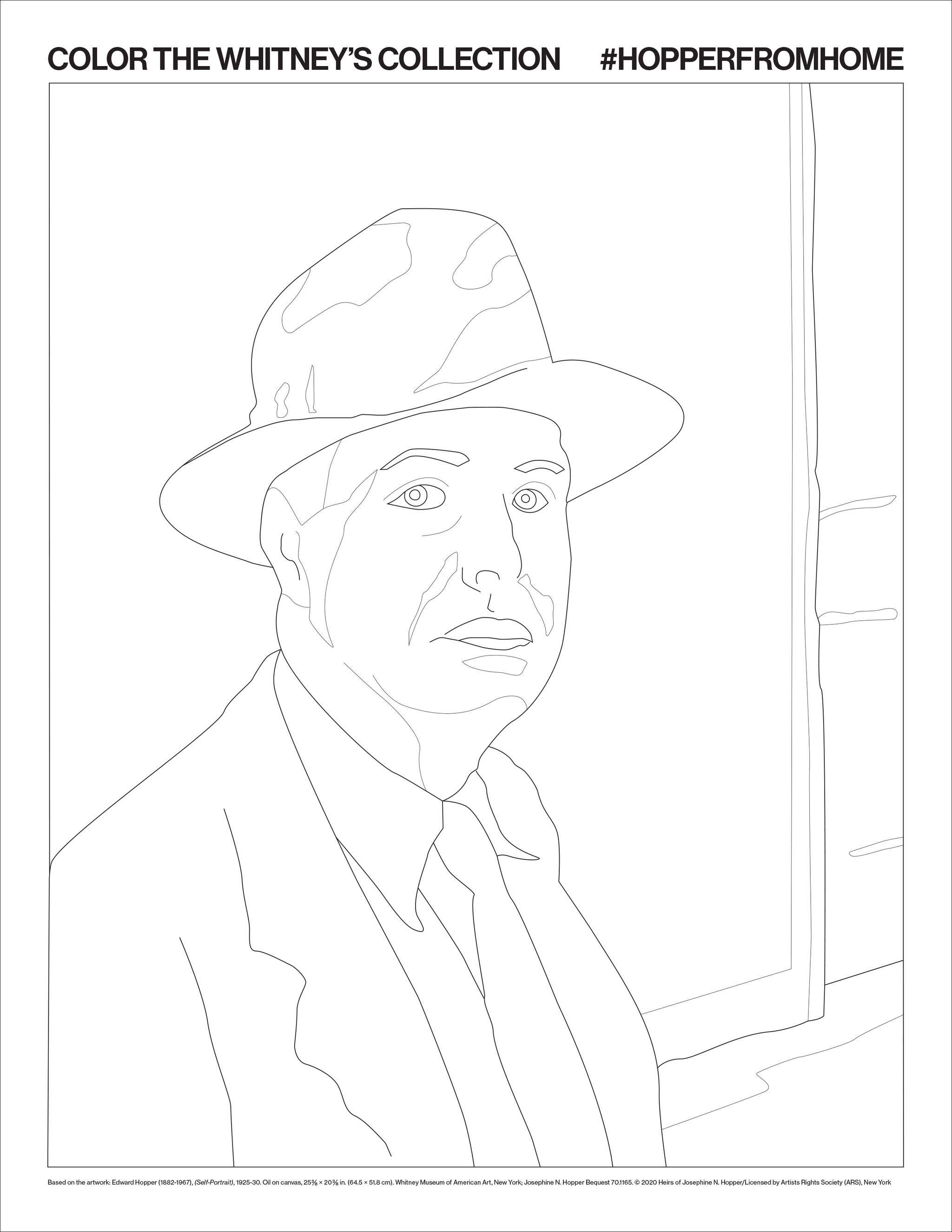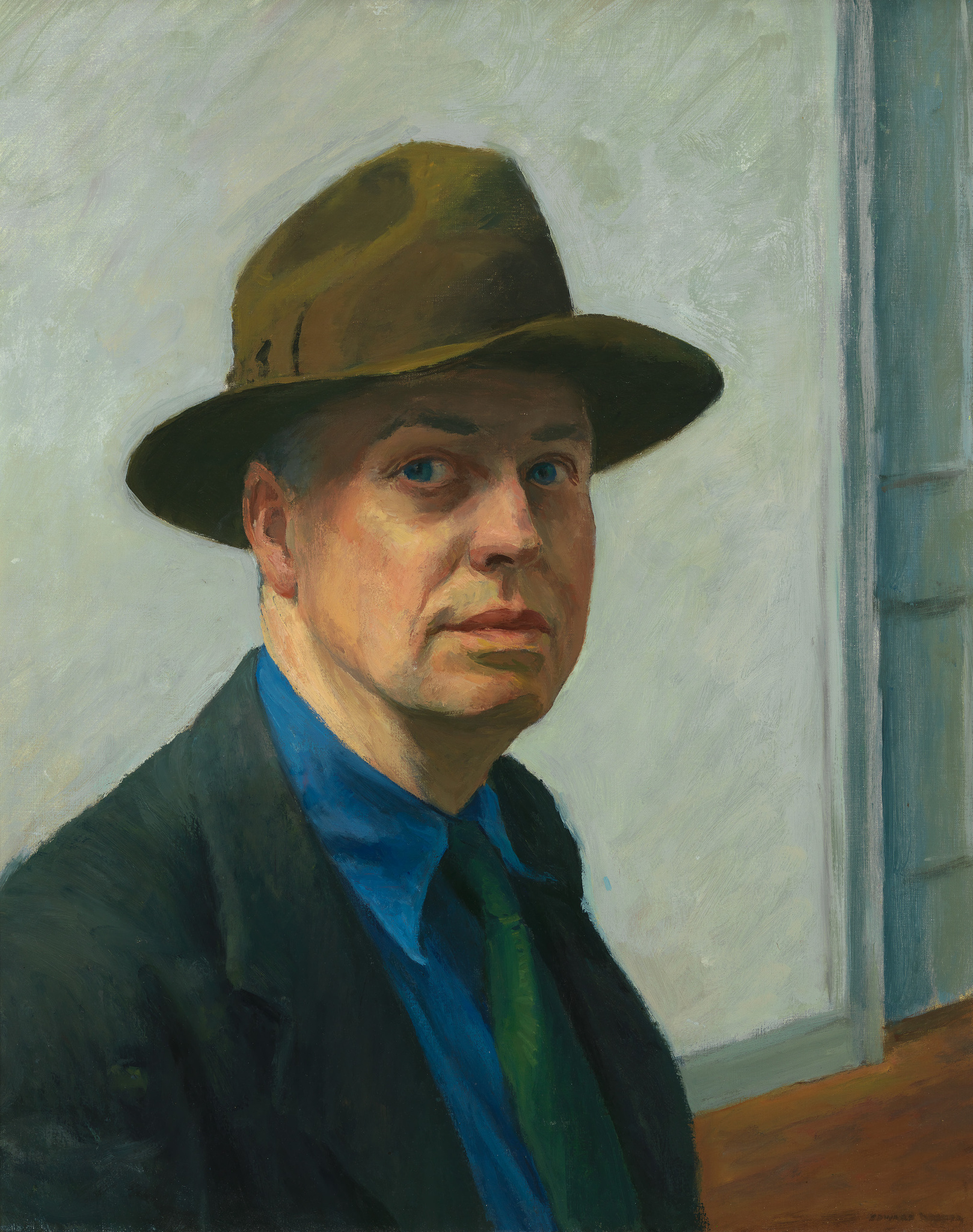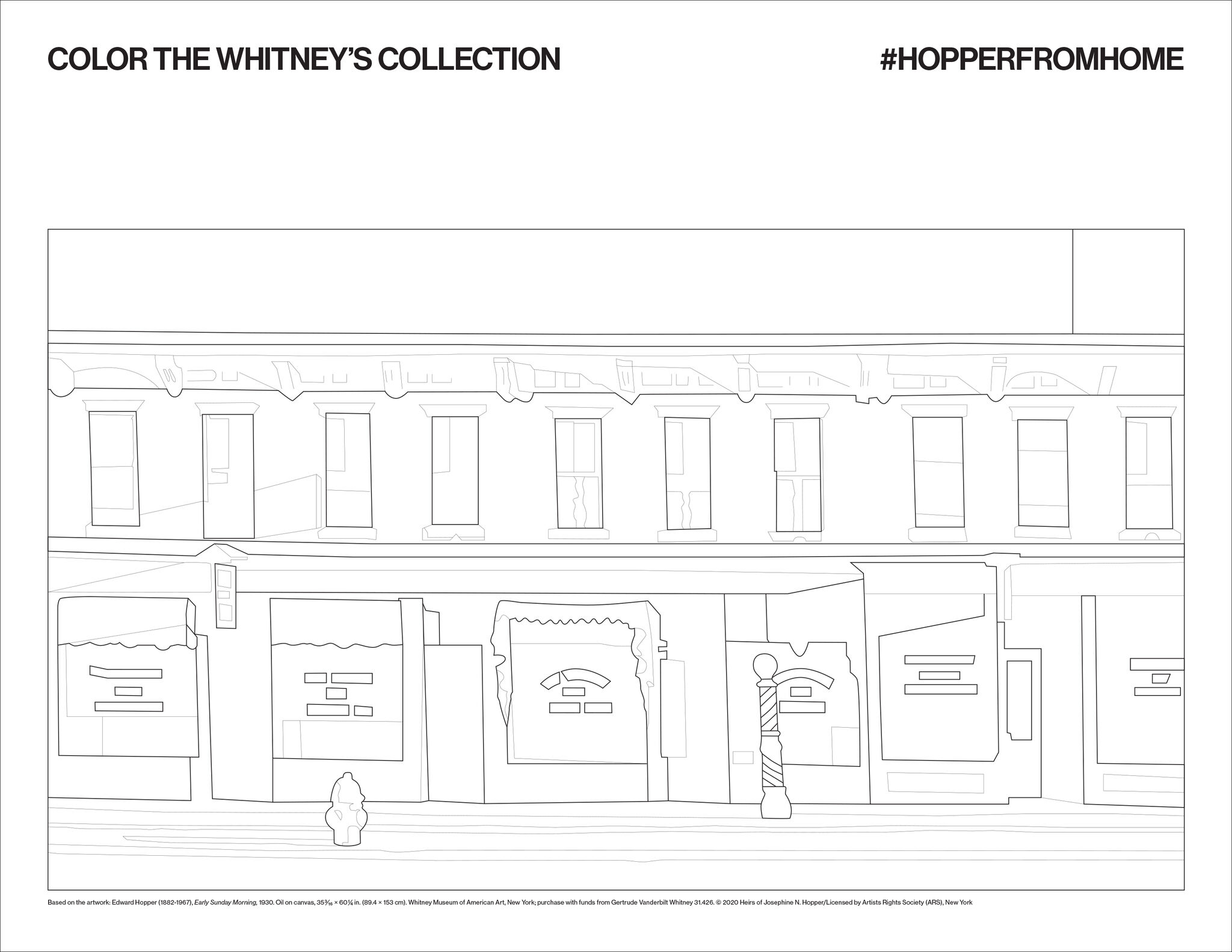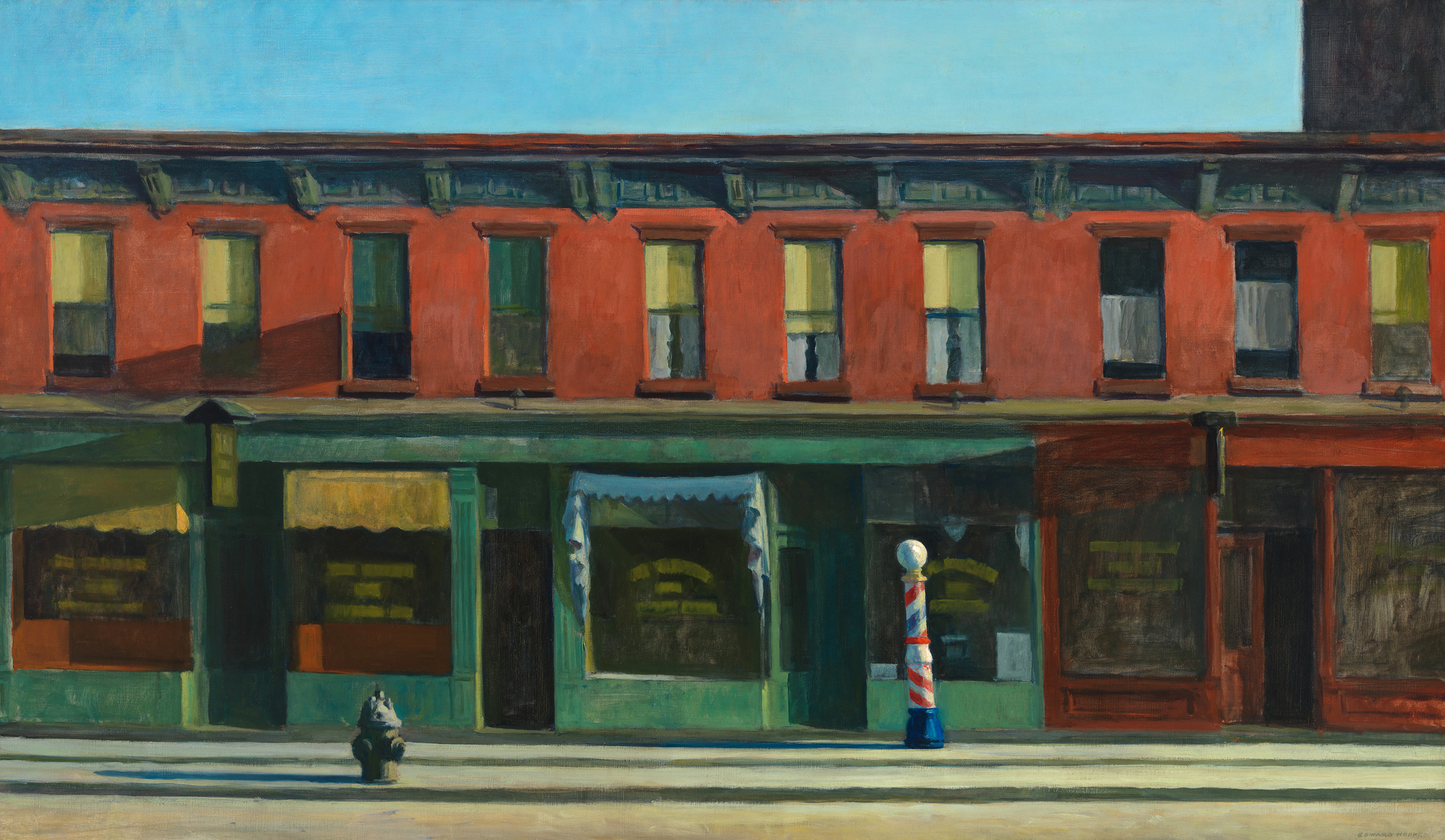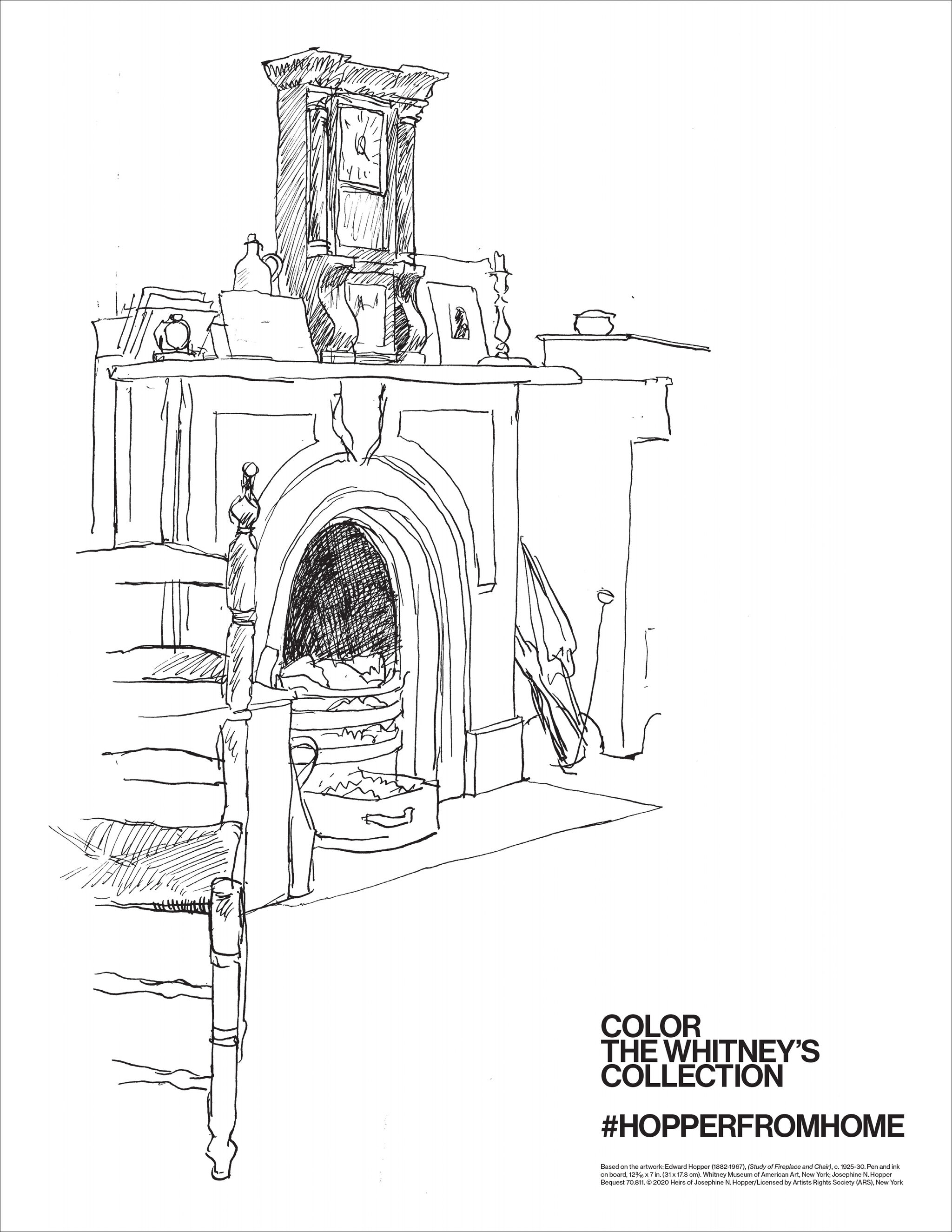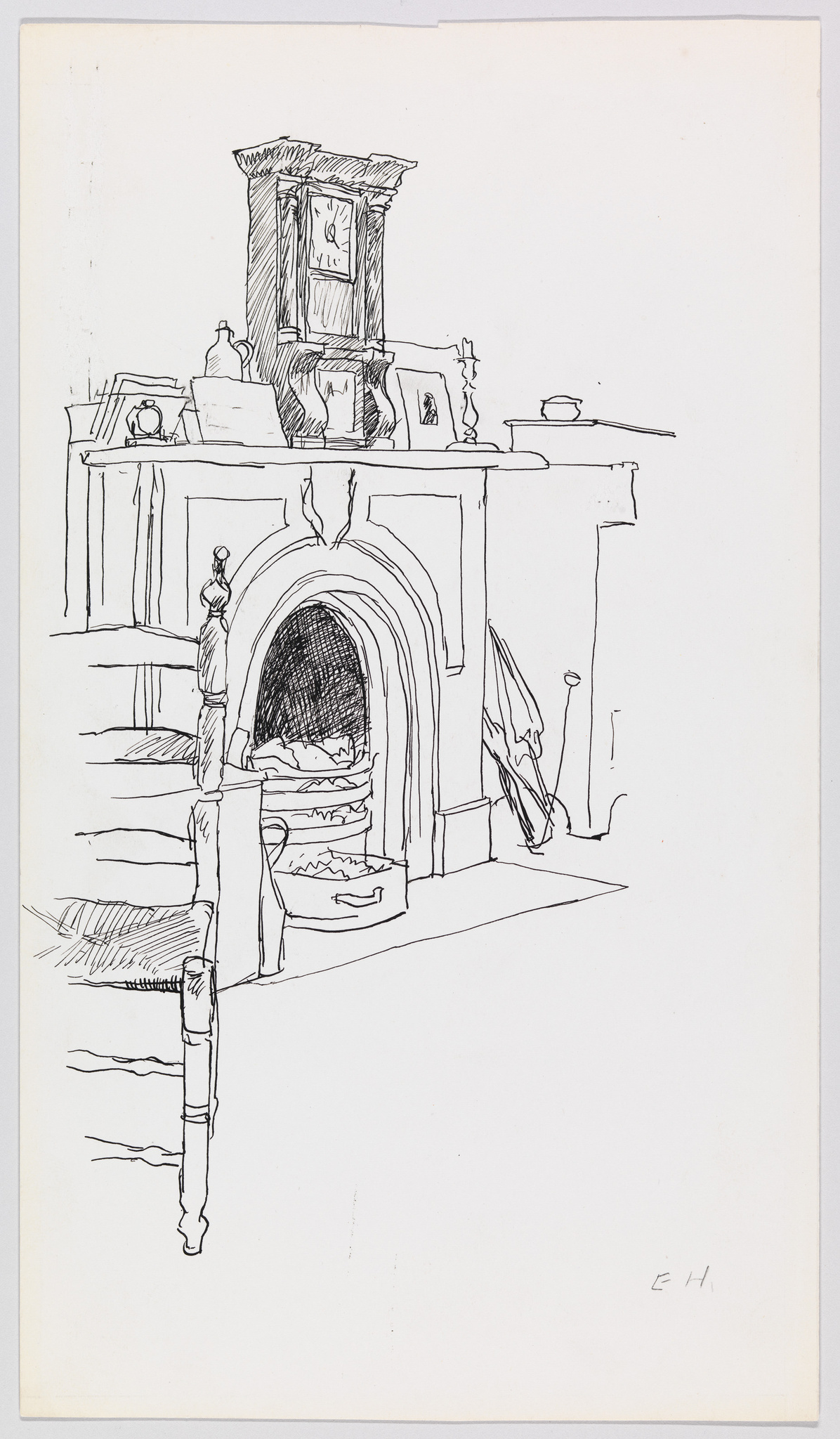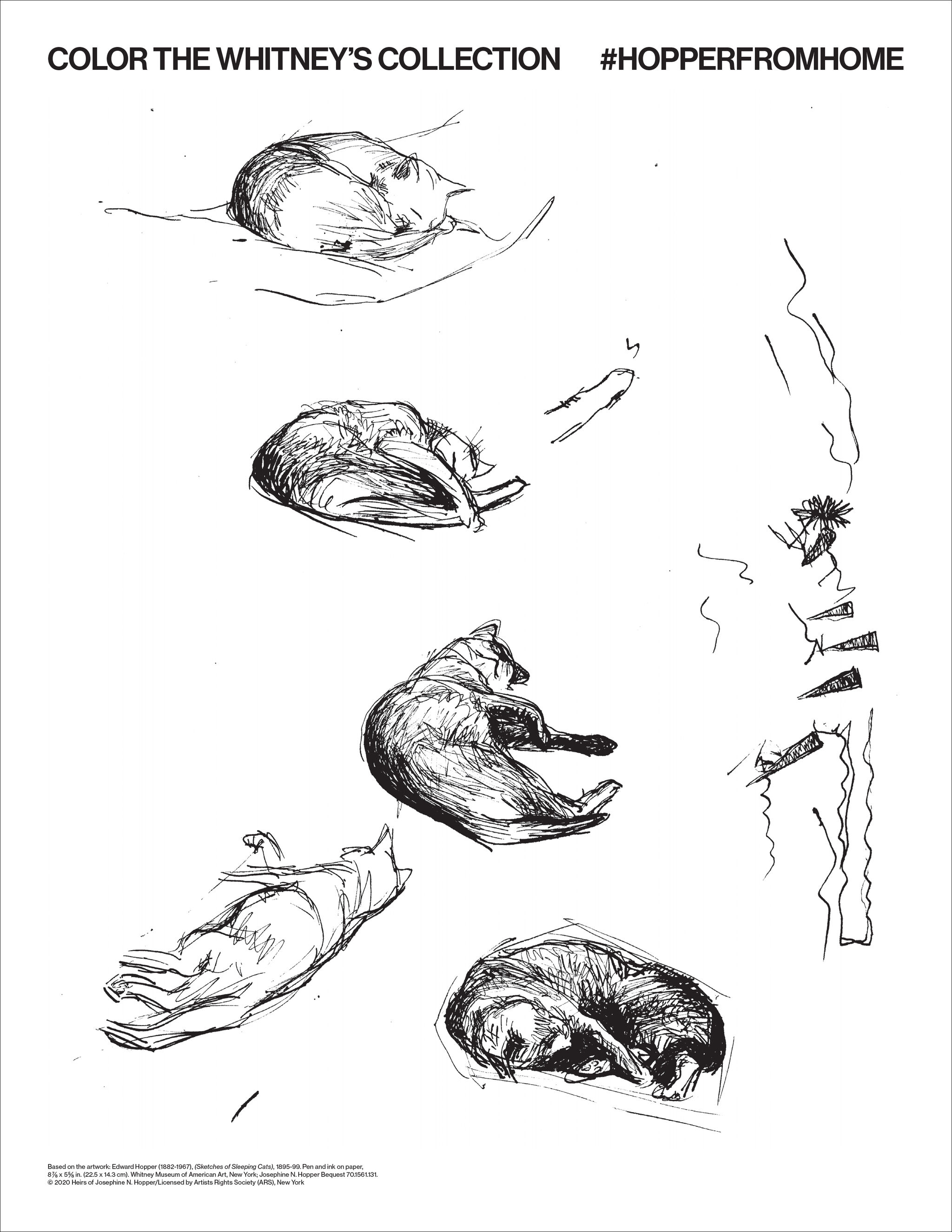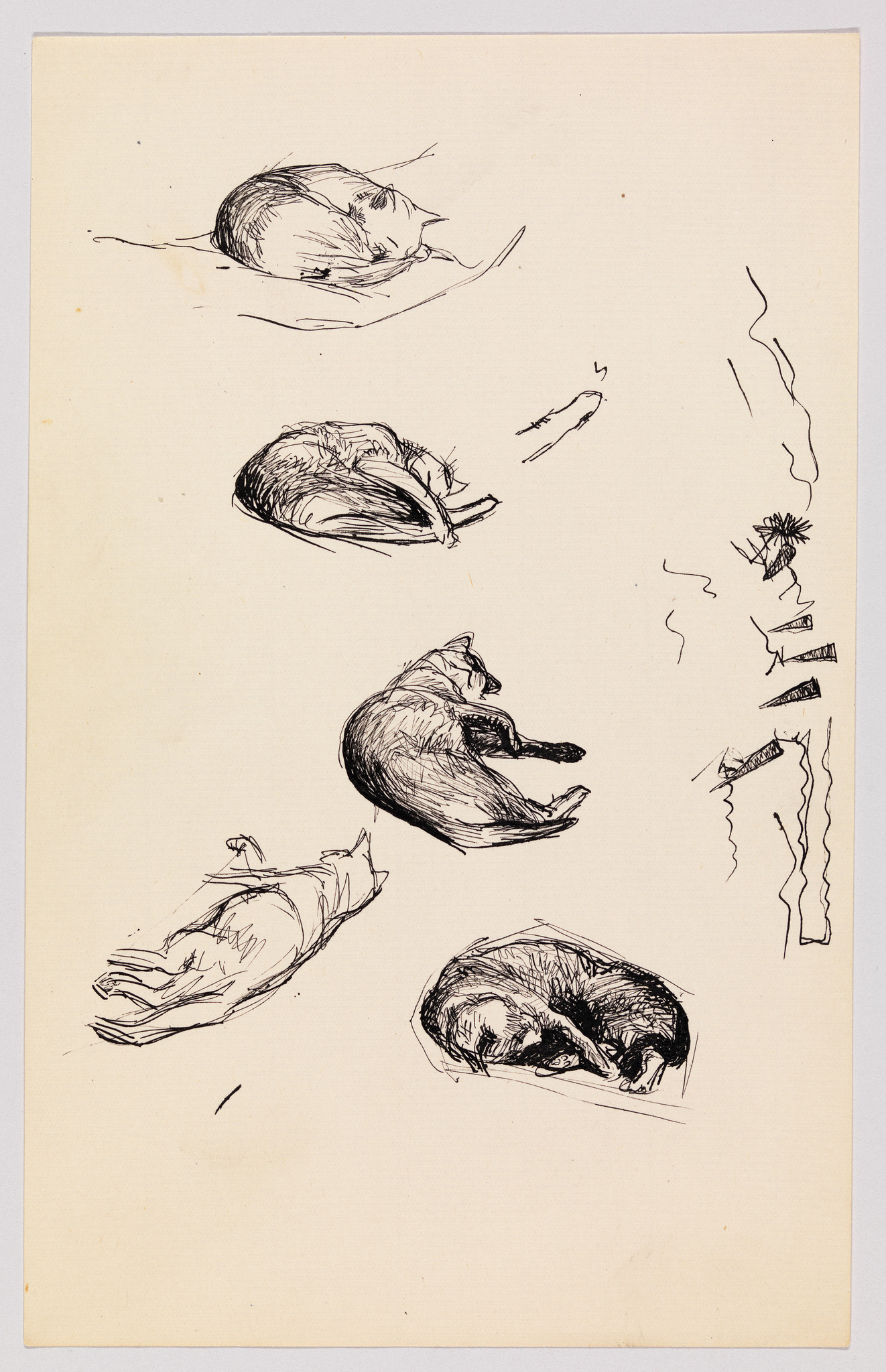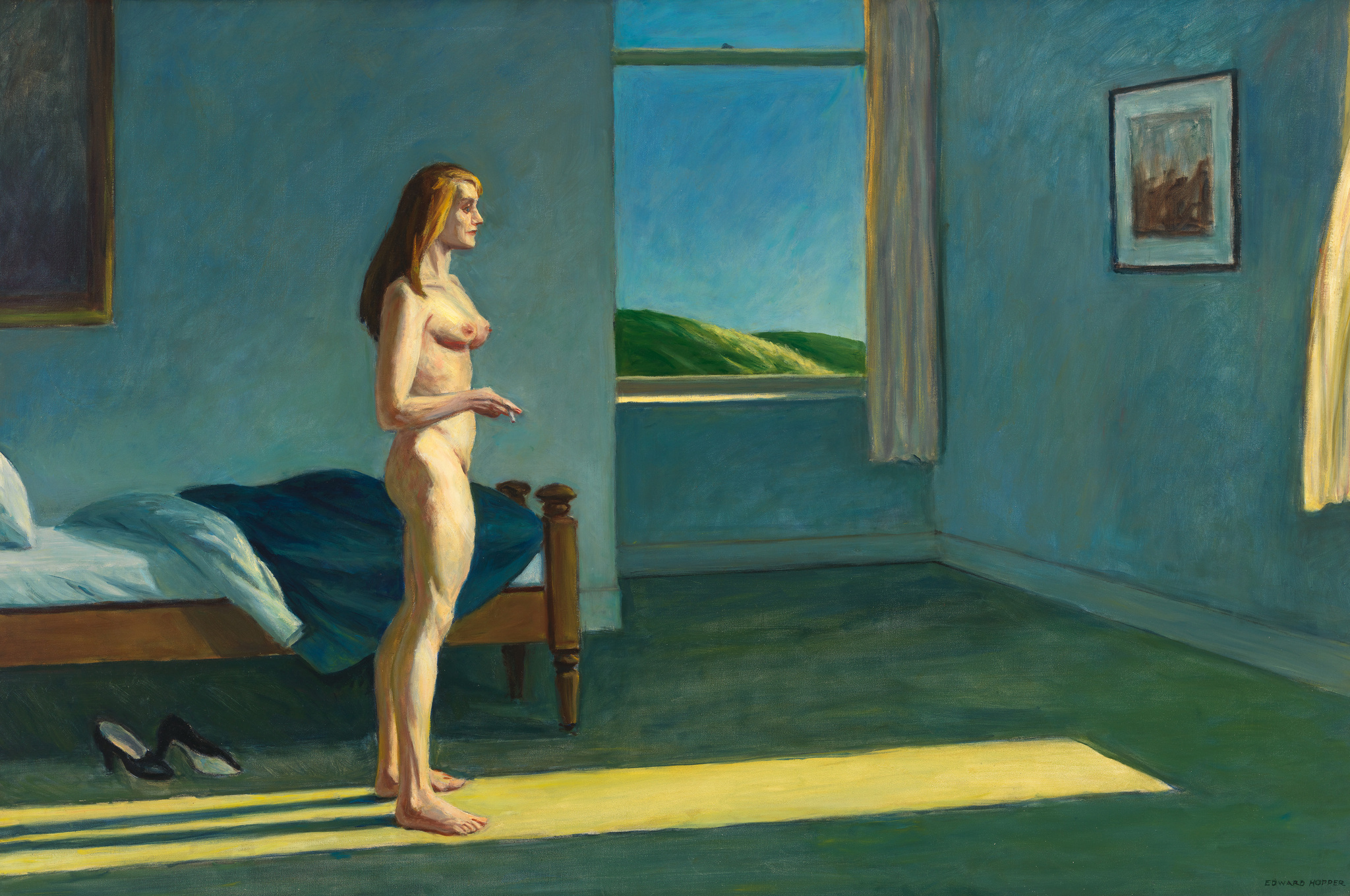Hopper From Home
You've seen them in our galleries, and now's your chance to create your very own Edward Hopper artworks! Download these coloring pages based on Hopper paintings and drawings in the Whitney's collection, then flex your creativity as you decide whether to recreate the artist's beloved color palettes or make new ones that are all your own.
Be sure to share your creations with us on social media. Tag us @whitneymuseum using #HopperFromHome.
Self-Portrait
While self-portraits have long been a hallmark for many artists, Hopper didn't actually paint very many. In fact, this is one of the few self-portraits he created as an adult. Painted when the artist was in his forties and starting to gain wider recognition, this self-portrait shows a humble-looking Hopper dressed in a suit and hat—looking more like a starchy businessman than a bohemian painter—standing by the door of his apartment at 3 Washington Square North in New York's Greenwich Village, where he lived and worked for fifty-four years.
Early Sunday Morning
With sketchbook in hand, Hopper loved taking daily walks around his Greenwich Village neighborhood and quickly capturing the scenes he observed. The stretch of Seventh Avenue that inspired this painting was less than a mile from the artist's home—and even in 1930, this low-slung commercial and residential building stood out as a remnant of a vanishing New York, one increasingly dwarfed by the construction taking place seemingly everywhere.
Rather than painting a bustling urban scene, Hopper depicts in Early Sunday Morning an almost impossibly quiet corner of the city—one remarkably still and free of people. Who could have guessed that ninety years later, Hopper's idealized version of a hushed New York City would become a reality?
Study of Fireplace and Chair
Turning once again to his immediate surroundings at 3 Washington Square North for inspiration, Hopper made this pen-and-ink study of his studio in the years immediately following his marriage to his wife, Josephine, which marked the first time he shared his home with another.
In addition to a Shaker chair, here we see the room's fireplace—a very important fixture, given that the Hoppers' apartment had no other heating system in place—and its mantle, cluttered with austere symbols of the couple's shared domesticity, including papers, a clock, a candlestick, and a jug.
Sketches of Sleeping Cats
Long before cats took over the internet, a teenage Hopper sketched these tuckered-out tabbies. A consummate doodler even from a young age, Hopper made these sketches before receiving any formal training in art or illustration. With the delicate detail work visible in the fur and the variety of poses he composed on the sheet, these simple pen-and-ink explorations prefigure the drawings Hopper would soon make in the figure-drawing classes he took at the New York School of Art and Design.

